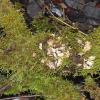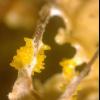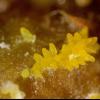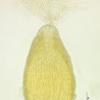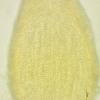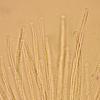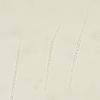
22-11-2022 21:35
Elisabeth StöckliBonsoir, Trouvé sur vieux thalles de Peltigera (

22-11-2022 21:00
I have sometimes seen the Hypomyces papulasporae

13-11-2022 21:24
 Robin Isaksson
Robin Isaksson
Hi!As this one is new to Sweden i have to ask if i

12-11-2022 07:33
Bonjour, Certains savent déjà que je m'intéres

17-11-2022 21:18
 Stephen Martin Mifsud
Stephen Martin Mifsud
I am examining a presumed fungus that produce a si

20-11-2022 19:55
Mirek GrycHi Found a few days ago. I have never studied suc

20-11-2022 19:42
Mirek GrycHiFound a month ago on pine bark. The fruiting bod
Neobarya peltigerae
Elisabeth Stöckli,
22-11-2022 21:35
Bonsoir,
Trouvé sur vieux thalles de Peltigera (zone humide à 990m), périthèces grégaires, coniques à piriformes, jaunes, sur un subiculum blanc, 0.2 - 0.5 mm, ascus 117 - 174 x 4.5 - 5 µm, IKI-, crochets+, spores filiformes, non septées, guttulées 35 - 73 x 1.5 - 2.5 µm, hyalin. Pouvez-vous me confirmer ma détermination ? Merci d'avance !
Elisabeth
Alain GARDIENNET,
22-11-2022 22:31
Re : Neobarya peltigerae
Génial ! C'est bien cela.
Gilbert MOYNE,
22-11-2022 22:59
Re : Neobarya peltigerae
Ca pousse donc en dessous de 1000 m ?
Amitiés
Gilbert
Alain GARDIENNET,
23-11-2022 08:44
Re : Neobarya peltigerae
Pour l'anecdote, Andgelo l'a trouvé le 3/11 dernier à Bonnevaux, rive gauche du Drugeon, sur Peltigera membranacea également, et moi une heure plus tard, excité par la trouvaille d'Andgelo, sur la rive droite mais sur Peltigera horizontalis, en dessous de 1000 m également.
Suisse : 1 - France 2 (Notre coupe du monde à nous, beaucoup plus saine !)
Suisse : 1 - France 2 (Notre coupe du monde à nous, beaucoup plus saine !)
Elisabeth Stöckli,
23-11-2022 18:32
Re : Neobarya peltigerae
Chers amis,
Magnifique, Gilbert n'a pas perdu son humour , Alain non plus. Merci pour vos retours.
Amitiés,
Elisabeth

